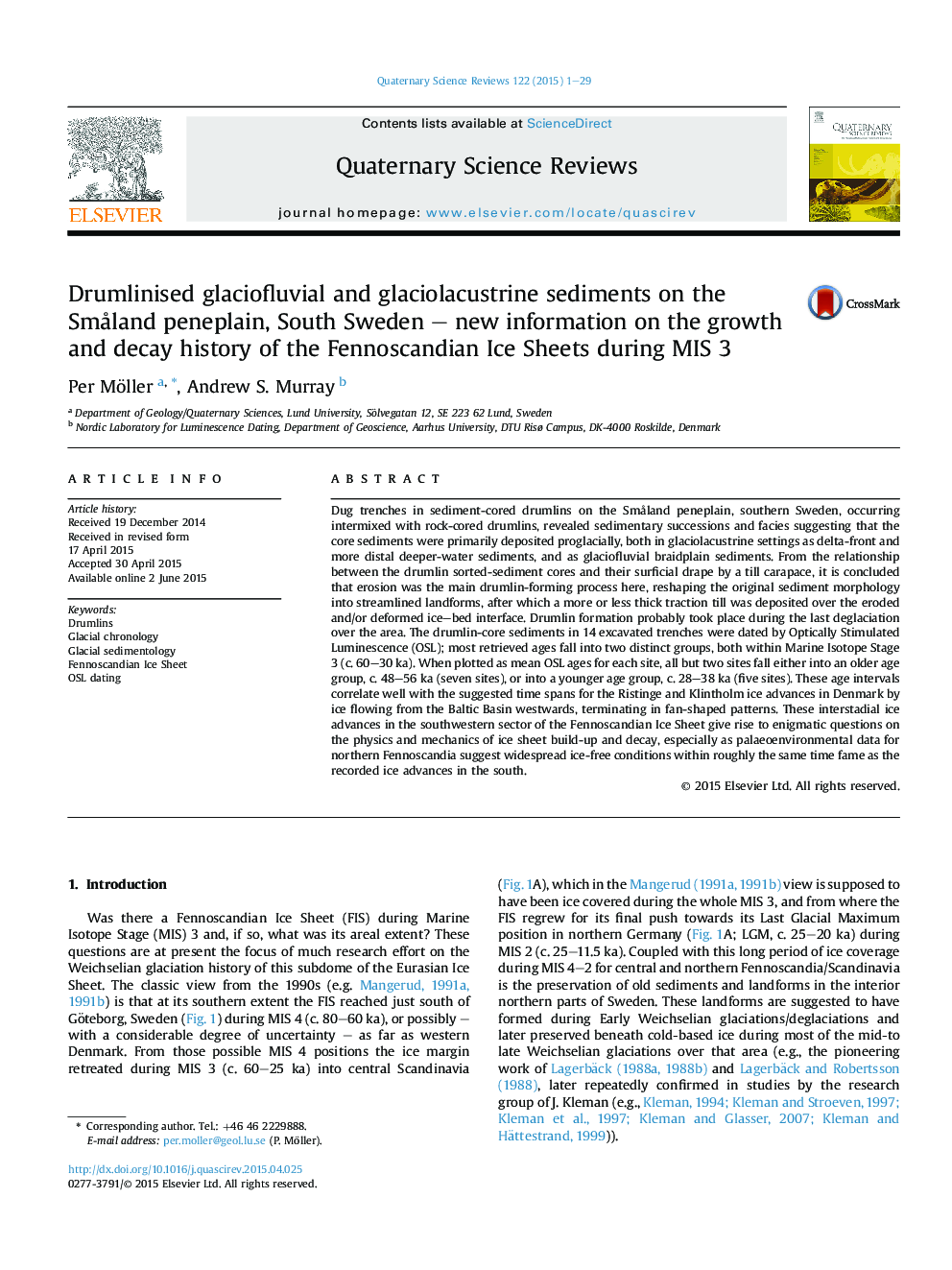| Article ID | Journal | Published Year | Pages | File Type |
|---|---|---|---|---|
| 6445850 | Quaternary Science Reviews | 2015 | 29 Pages |
Abstract
Dug trenches in sediment-cored drumlins on the Småland peneplain, southern Sweden, occurring intermixed with rock-cored drumlins, revealed sedimentary successions and facies suggesting that the core sediments were primarily deposited proglacially, both in glaciolacustrine settings as delta-front and more distal deeper-water sediments, and as glaciofluvial braidplain sediments. From the relationship between the drumlin sorted-sediment cores and their surficial drape by a till carapace, it is concluded that erosion was the main drumlin-forming process here, reshaping the original sediment morphology into streamlined landforms, after which a more or less thick traction till was deposited over the eroded and/or deformed ice-bed interface. Drumlin formation probably took place during the last deglaciation over the area. The drumlin-core sediments in 14 excavated trenches were dated by Optically Stimulated Luminescence (OSL); most retrieved ages fall into two distinct groups, both within Marine Isotope Stage 3 (c. 60-30 ka). When plotted as mean OSL ages for each site, all but two sites fall either into an older age group, c. 48-56 ka (seven sites), or into a younger age group, c. 28-38 ka (five sites). These age intervals correlate well with the suggested time spans for the Ristinge and Klintholm ice advances in Denmark by ice flowing from the Baltic Basin westwards, terminating in fan-shaped patterns. These interstadial ice advances in the southwestern sector of the Fennoscandian Ice Sheet give rise to enigmatic questions on the physics and mechanics of ice sheet build-up and decay, especially as palaeoenvironmental data for northern Fennoscandia suggest widespread ice-free conditions within roughly the same time fame as the recorded ice advances in the south.
Related Topics
Physical Sciences and Engineering
Earth and Planetary Sciences
Geology
Authors
Per Möller, Andrew S. Murray,
